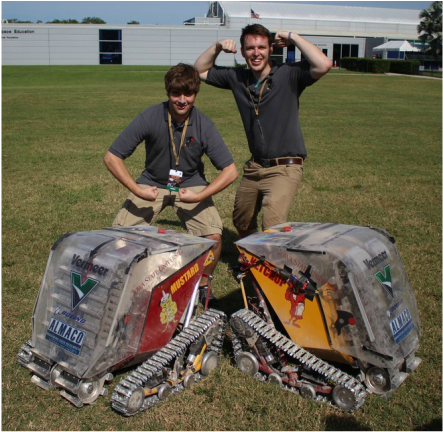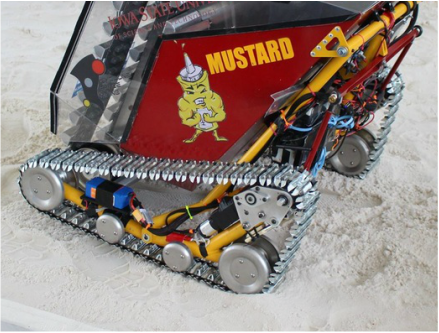NASA Mining - 2016
|
3rd Place – Overall
2nd Place – Outreach Best Use of Social Media Award The 2016 season of the NASA robotic mining competition was most interesting. Initially Taylor Tuel, Nick Hasto and myself were too busy mentoring FIRST robotics and opted not to participate in the NASA RMC. This changed as our schedules were re-evaluated and we committed to joining the team around spring break. With our introduction to the team there were many changes to the currently designed rover we wished to implement. The team leadership decided splitting the team into 2 sub-teams and having a design competition a month later would be the appropriate way of moving forward. With the sub-teams created, our group went head first and started designing new rovers from the ground up. The vision I had for the 2014 season was having 2 identical and fully capable rovers fit in the size box given to us. We designed the 2016 rover(s) around this idea and ended up with the dynamic duo. The names Ketchup and Mustard were initially internal names playing off the school colors of cardinal and gold but after Nigel at MuseOn LLC. put together the logos we felt we needed to show our team spirit and display the names for everyone to see! Below is the slideshow we presented for the design review (which may or may not have been created the morning of the presentation. Hey! We designed the robots in 1 week, cut us some slack). https://www.news.iastate.edu/news/2016/05/12/spacemining16 |
|
|
|
Design Review Slideshow
Drive train
|
The drive train for the robots was by far the most innovative and complex drive we have implemented on a mining rover to date. The design for our prior track system was nearing maturity and we were getting little gain for the work put into them to reduce weight and increase functionality. The material selection for the track system has plagued us for years, with judges reminding us that the rubber used would not operate in the harsh environment of space. The plan moving forward was a space-ready system with added functionality of a suspension system, all while reducing weight from prior iterations.
|

